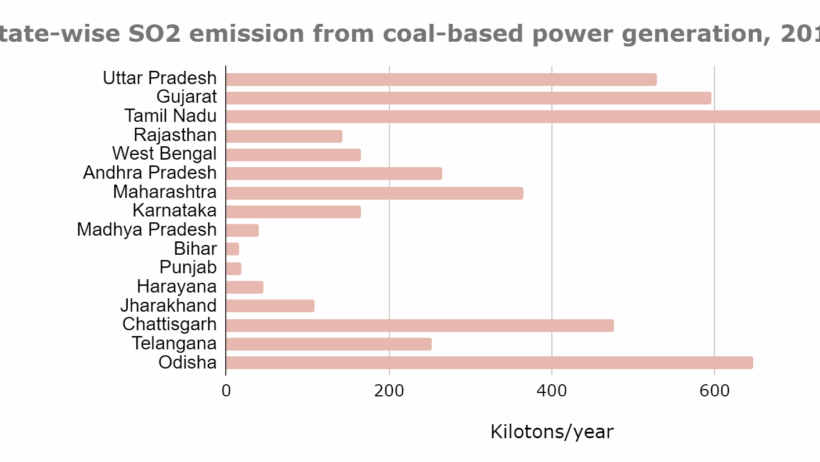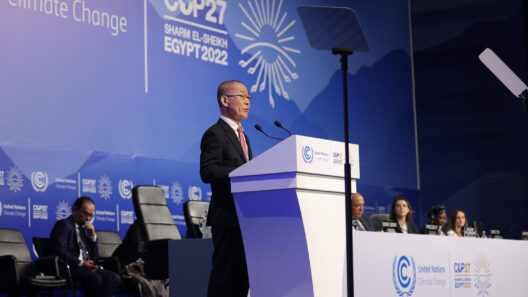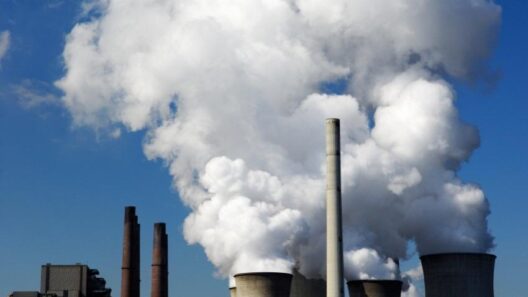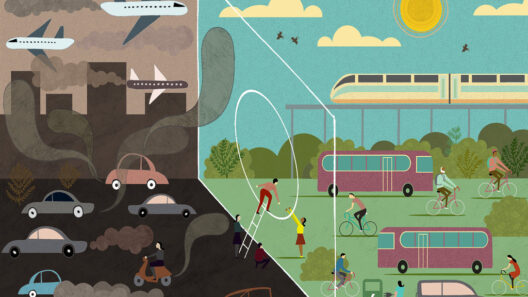The practice of burning coal for energy is deeply ingrained in the fabric of our industrialized world. The latent promise of coal, once seen as an abundant energy resource, now stands overshadowed by the profound ramifications it inflicts on our planet’s climate. This essay unravels the intricate connections between coal-based power generation and climate change, inviting a recalibration of our perspectives and a cautious examination of our energy choices.
To understand the coal connection, one must first delve into the mechanics of coal combustion. When coal is ignited, its carbon content reacts with oxygen, producing carbon dioxide (CO2), a greenhouse gas that is a significant contributor to global warming. Yet, the ramifications do not stop at CO2 emissions. The combustion of coal releases a cacophony of pollutants, including sulfur dioxide (SO2), nitrogen oxides (NOx), and particulate matter, which exacerbate air quality issues and pose severe health risks to human populations.
The historical reliance on coal power is staggering. In many countries, coal has been the backbone of electricity production for decades, and it remains a prominent fixture in the global energy portfolio. As nations industrialize, coal has often served as a cheap and readily available fuel source, fuelling economic growth and facilitating technological advancements. However, this apparent economic boon has come at an egregious environmental cost, one that our planet now grapples with in the form of climate instability.
Global warming, driven by increases in greenhouse gas emissions, has led to a plethora of climatic anomalies: rising sea levels, more frequent and severe weather events, and shifting ecosystems. Each coal-fired power plant contributes to this narrative of destruction. As coal plants spew millions of tons of CO2 into the atmosphere annually, they increasingly burden our climate with their carbon footprint.
Transitioning to coal-based power generation is not merely an environmental issue but also a moral one. The disproportionate impact on vulnerable communities, often situated near power plants, cannot be overlooked. These populations face a heightened risk of respiratory illnesses, cardiovascular diseases, and other health-related afflictions linked to air pollution. In this context, the fight against coal is also a fight for justice, equity, and human rights. Those who contribute the least to the problem are often the ones who suffer the most.
Yet, amidst the dire urgency of climate change, there is a glimmer of hope. The global energy landscape is beginning to shift, albeit gradually. Renewables such as solar, wind, and hydroelectric power are proliferating, offering sustainable alternatives to fossil fuel dependency. Governments, organizations, and individuals are increasingly pledging to reduce their carbon footprints, invest in cleaner technologies, and phase out coal power. These are not merely hollow promises; they represent a reconceptualization of our relationship with energy and the surrounding environment.
However, the transition to renewable energy sources is fraught with challenges. Infrastructure limitations, economic concerns, and political resistance present significant obstacles to a swift and just transition. To overcome these hurdles, a multifaceted approach involving robust policy frameworks, public-private partnerships, and community engagement is essential. This endeavor will necessitate not only technological innovations but also an ideological shift that prioritizes sustainability over short-term profits.
One cannot overlook the importance of education and advocacy in this domain. Raising awareness about the catastrophic impacts of coal on climate and health is crucial for mobilizing public support. Grassroots movements and environmental organizations serve as catalysts for change, spearheading campaigns to promote clean energy alternatives and challenge the status quo. By informing individuals and communities, they empower stakeholders to demand accountability from policymakers and corporate entities that perpetuate coal dependency.
Moreover, the exploration of carbon capture and storage (CCS) technology presents another avenue for mitigating the adverse effects of coal power. CCS aims to trap CO2 emissions before they enter the atmosphere, an endeavor that could significantly reduce the greenhouse gas emissions from existing coal plants. However, while promising, CCS technology is still in its infancy, and widespread implementation poses technical and economic challenges that must be addressed.
The narrative surrounding coal power and climate change is complex and fraught with tension. There exists a dichotomy between the historical reliance on coal for economic prosperity and the critical need to shift towards sustainable energy sources. By dissecting the coal connection, we begin to confront the uncomfortable truths of our energy choices. It is a call to reevaluate our priorities; our planet’s future hinges not only on technological advancements but also on a collective commitment to environmental stewardship.
As we stand at a pivotal juncture, ordinary citizens, industry leaders, and policymakers must collaborate to dismantle the fossil fuel regime that has long governed energy production. The imperative to transition from coal to cleaner alternatives is an ethical obligation. By spearheading educational initiatives, investing in renewable technology, and positioning community welfare at the forefront, we can extinguish the toxic legacy of coal. The future is not cast in stone but can be reshaped through informed action, collaborative leadership, and unwavering resolve.
In conclusion, the coal connection embodies a complex interplay of environmental, health, and socioeconomic factors. The fight against coal power is not just about energy; it signifies a larger battle for a habitable planet. The moment to act is now. The promises of a sustainable future beckon us; we must answer the call with courage and tenacity, reshaping our energy landscape for generations to come.







